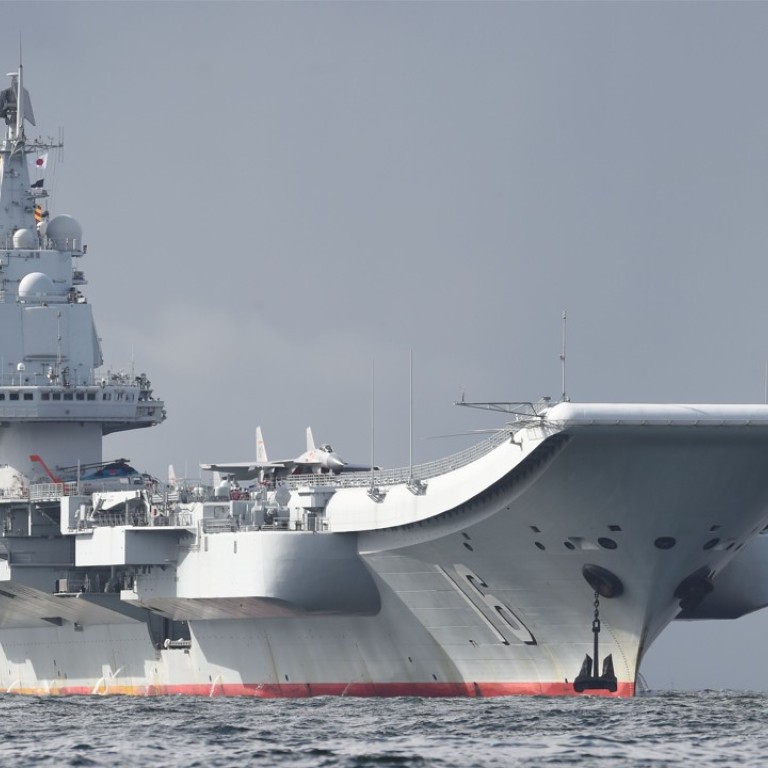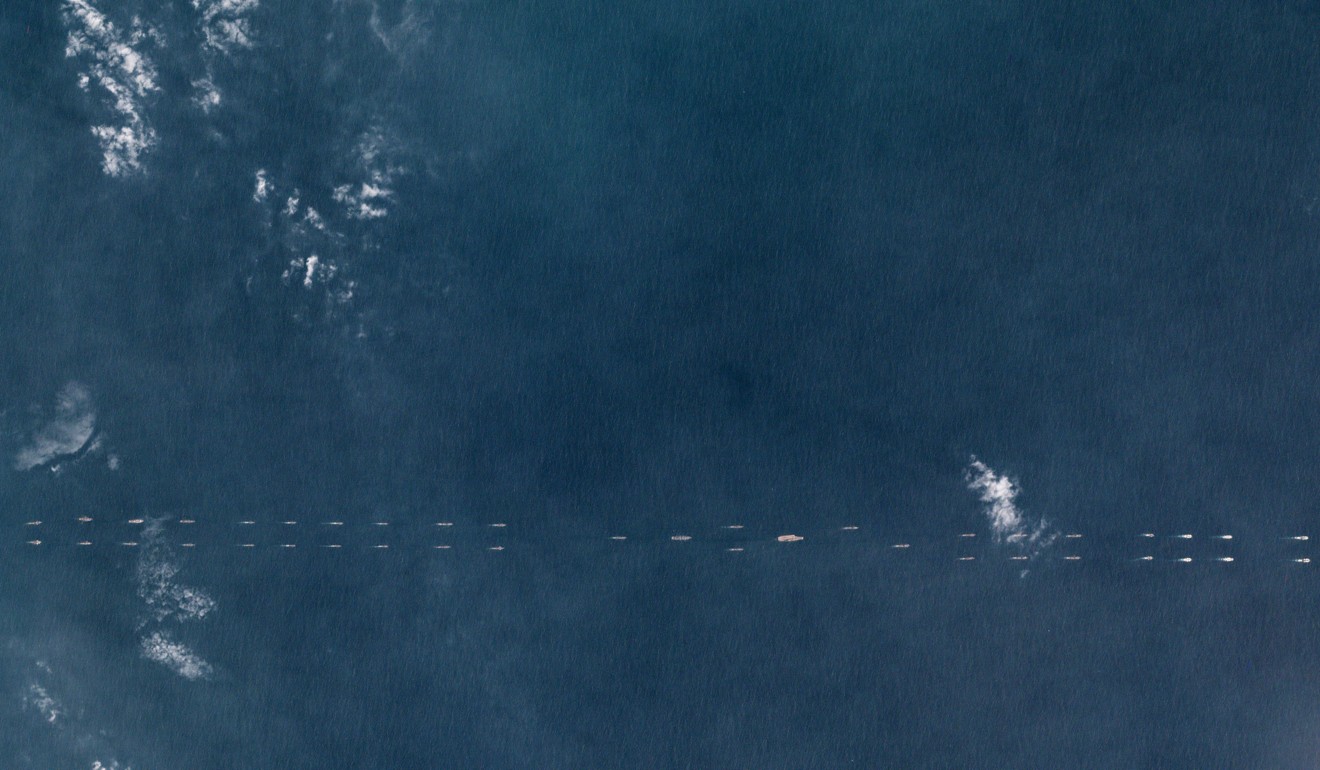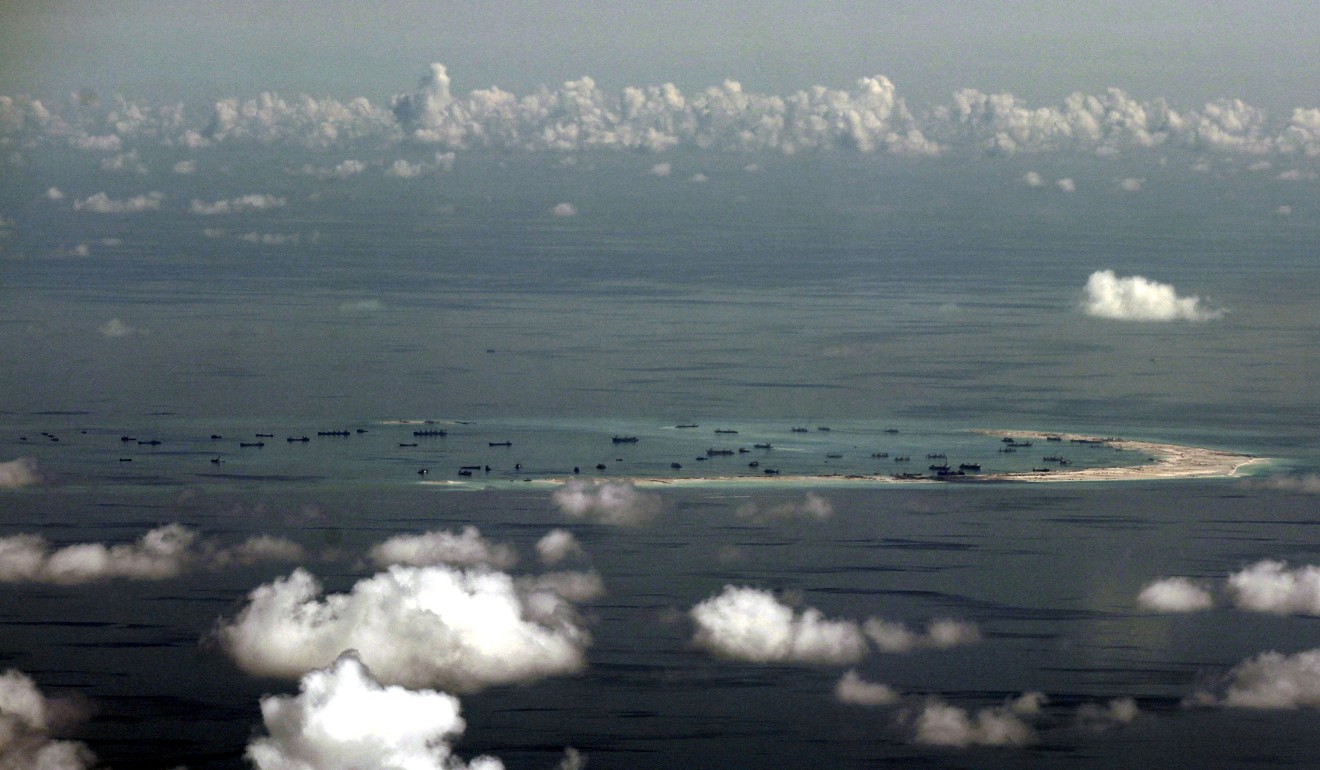
China’s 40-vessel drill to boost war capabilities ‘posed no threat’ in disputed South China Sea
‘Only those who are used to threatening others will see others as a threat,’ a ministry spokesman said after military’s big show of force in contested waters
The Chinese military aimed to enhance its “war-fighting capabilities” without departing from a policy of peaceful development with its recent large-scale naval drills in the contested South China Sea, a spokesman for China’s defence ministry said.
Ministry spokesman Ren Guoqiang, asked to comment about the military’s deployment of an aircraft carrier and dozens of warships in the region, told reporters on Thursday that the “routine” exercises were in line with China’s “defensive” military policy and that its South China Sea activities posed no threat to other countries.
“Only those who are used to threatening others will see others as a threat,” Ren said during a press conference.

His comments came after satellite images taken on Monday showed at least 40 ships and submarines had flanked the Chinese aircraft carrier Liaoning in the controversial region, off Hainan island.
The flotilla was headed by what appeared to be submarines, with aircraft above, according to the images carried by Reuters.
What’s behind Beijing’s South China Sea moves – and why US patrols are making things worse
The PLA navy’s live-fire exercises were part of an “annual” and “routine” training programme with no specific target set, Ren said.
“Its aim is to test the training capabilities of the PLA and enhance their training capabilities,” the spokesman said. “It is also aimed at improving the war-fighting capabilities of the whole military.”
The demonstration was expected to put Washington on notice.
Ren said China’s military objected to a recent “freedom of navigation” patrol by a US warship within 12 nautical miles of Mischief Reef, a Chinese artificial island in the South China Sea.
Ren said China will enhance its military presence in the South China Sea in accord with the level of military threat posed by US patrols in the area.
Chinese air force jets, bombers ‘prepare for war’ over South China Sea
The US military has criticised China for a lack of transparency over its military activities and extensive land-reclamation projects aimed at expanding the islands and reefs it controls in the South China Sea.
Early in March, the US aircraft carrier USS Carl Vinson arrived in Vietnam for the first time since the end of the Vietnam war more than 40 years ago, in what was seen as a demonstration of US opposition to China’s moves in the region.
The US has said China’s moves have created regional unease.
Last week, the Liaoning carrier group entered the Taiwan Strait, after President Xi Jinping strongly warned against Taiwan separatism.
China accuses US of ‘serious provocation’ in South China Sea
Beijing has claimed the self-ruled island as its sacred territory and considers it a wayward province.
Xi has made the reunification of Taiwan and the mainland a priority for achieving his goal of national rejuvenation.

When Ren was asked about the Liaoning’s passage through the waterway, he replied: “You can expect more of such training activities in the future.”
In the past year, Beijing has ramped up military exercises around the island, which is one of the mainland’s most sensitive issues.
Why China will keep its South China Sea bases, come hell or high water
China’s claims in the resource-rich waterway have been disputed by Vietnam, the Philippines, Malaysia and Brunei. Taipei also has claims.
Vietnam recently halted an oil drilling project off its southeastern coast licensed to Spanish energy company Repsol following pressure from China.


